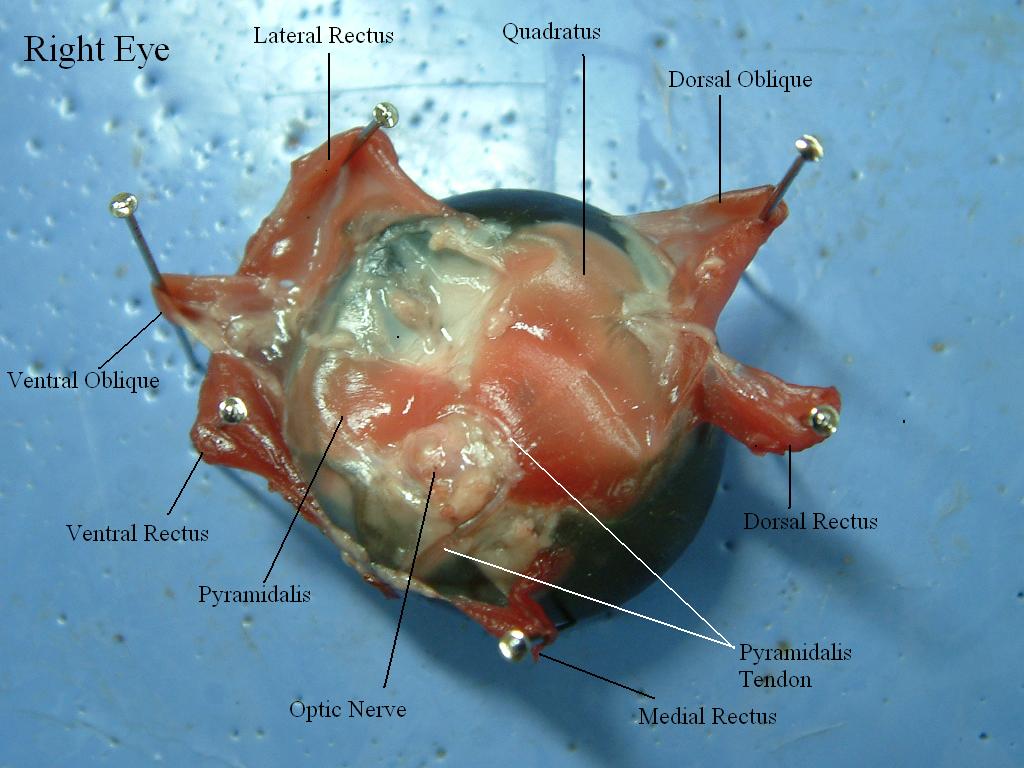

In the avian optic nerve, each cone cell in the retina connects individually to the brain. This allows sharper vision acuity than that of mammals, who have one bipolar cell that serves a number of rods.
Where the optic nerve actually enters the eye there is no retinal tissue, which produces a blind spot in the visual field. When the eyes are placed in the frontal position, the visual fields overlap and the blind spot in one eye can be interpreted by the other eye. Those animals who have laterally placed eyes do not have this accommodation. In diurnal animals there is an increased danger of blind spots, because there is an increase number of ganglion cells. This increase in cells causes the optic nerve to be larger. Diurnal birds accommodate for this by flattening the nerve head and tucking it away under the pecten. This allows the bird to have just one blind spot, instead of two.
As in mammals, the lacrimal gland moistens the eye. It
develops by eight epithelial buds, which grow from the conjuctival sac
and repeatedly divide.